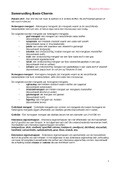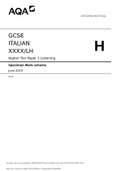Die verschiedenen Blutzelltypen und ihre grobe Funktion
Erythrozyten (rote Blutkörperchen)
Sie haben keinen Zellkern und sind rosa angefärbt.
Dies geschieht durch den Farbstoff Hämoglobin,
welcher auch den Sauerstoff bindet, um ihn in
unserem Blut zu den verschiedenen Organen etc. zu
transportiert. Diese Blutzellen sind nicht sehr
langlebig, da sie nur 120 Tage alt werden.
Erythrozyten sind die häufigste aller Blutkörperchen.
Thrombozyten (Blutplättchen)
Blutplättchen sind auch sehr häufig vorhanden, sind
im Gegensatz zu den roten Blutkörperchen sehr klein
und sehen unter dem Mikroskop nur wie kleine
Punkte aus. Auch die Thrombozyten sind kernlos und
haben die Aufgabe des Wundverschlusses.
Leukozyten (weisse Blutkörperchen)
Lymphozyten
Lymphozyten sind Blutzellen, die einen Zellkern besitzen. Die Kernfarbe ist
violett mit weissem Muster. Manchmal ist auch kein Zytoplasma mehr
sichtbar.
Granulozyten
Diese Art von Leukozyten sind leicht grösser als die Lymphozyten.
Wie alle weissen Blutkörperchen haben auch die Granulozyten
einen Zellkern. Das Zytoplasma der Granulozyten macht ½ der
Zelle aus. Die Farbe ist rötlich-lila mit weissen und rot-violetten
Punkten.
Monozyten
Monozyten sind die grössten der weissen Blutkörperchen. Sie sind
nicht immer rund, haben aber manchmal auch einen
gewellten Zellrand. Ihr Zellkern kann verschiedene Farben.
Ihr Zytoplasma ist grau-lila. Oft sieht man auch grosse
weisse Punkte im Zellinnernen, genannt Vakuolen.






